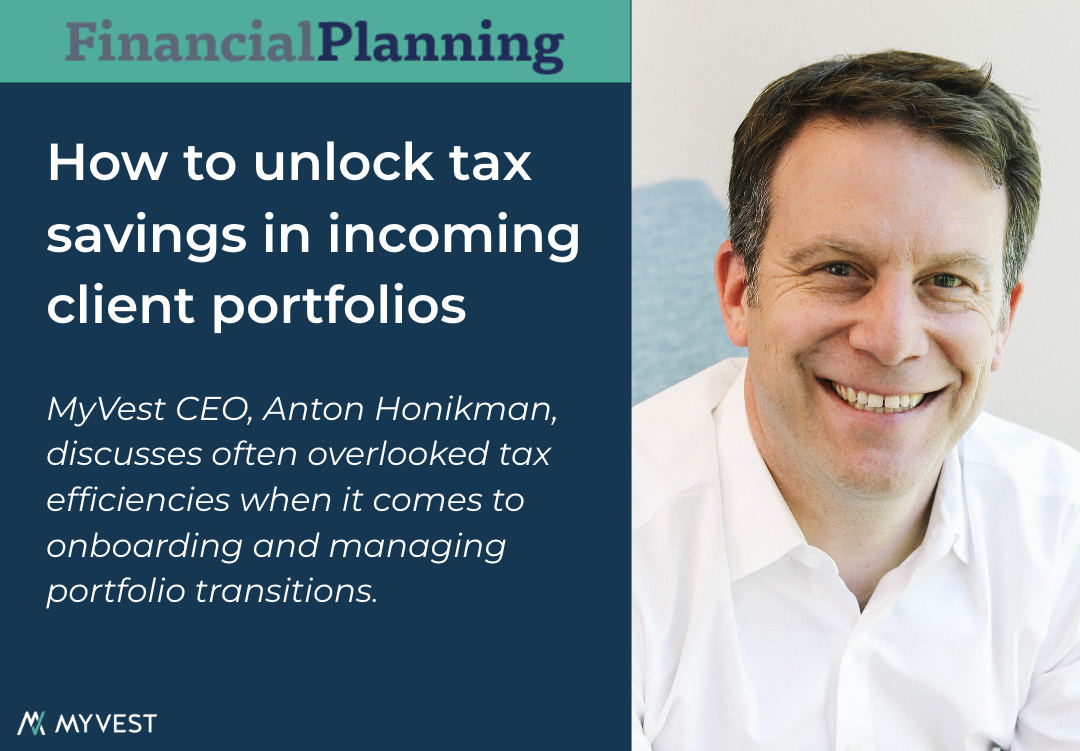This blog recaps recaps a recent article in Financial Planning by Tobias Salinger | September 26, 2024.
MyVest CEO Anton Honikman spoke with Tobias Salinger at Financial Planning about the often overlooked tax efficiencies when it comes to onboarding and managing portfolio transitions.
Industry consolidation, through mergers and acquisitions or recruitment, brings legacy portfolios to new firms or platforms, offering chances for tax-efficient transition strategies such as loss harvesting, rebalancing, and reducing large stock concentrations.
While this has historically been a manual-intensive and highly individualized process, new technologies and tools available today are enabling advisors to take advantage of this opportunity to build deeper trust and provide more value to their clients by implementing tax-saving opportunities during portfolio transitions at scale across a firm.
Below are a few highlight from Anton’s conversation:
Anton emphasizes that portfolio transitions during mergers or client onboarding create significant tax implications, requiring careful planning to manage gains and losses. One common illustrative example is managing large embedded gains during portfolio transitions, where tax savings can have a significant impact on a client’s overall financial picture.
As discussed in the article, one of the key tasks to consider implementing as part of the transition planning is setting up a “gains budget” to stage the liquidation of concentrated stocks over time, balancing short-term and long-term capital gains for optimal tax efficiency. This is a process also made easier by technology that can automate recommendations.
“You’re highly likely to see embedded gains coming in. It’s just something one should expect,” Honikman said. “There is a balancing act to staging that diversification over time.”
Technology platforms like MyVest have launched tools in recent years to automate tax-saving strategies during the planning to the execution and maintenance phases of a transition, ensuring a consistent standard of care without overburdening advisors.
The advances in technology and automation play an important role in being able to scale the benefit both across an individual advisor’s book of business, as well as across the enterprise. When an advisor “has multiple clients that are in transition at any point,” it’s critical to ensure there is a “consistency of care across the book of business” without trying to manually handle the entire workload.
Read the full article on Financial Planning.




![MyVest Byline: The Evolution of the UMA from 1.0 to 3.0 [Wealth Management]](https://myvest.com/wp-content/uploads/wealth-management-logo.webp)
![MyVest CEO predicts growth in model-delivery direct indexing [FundFire]](https://myvest.com/wp-content/uploads/Fundfire-1.png)
![MyVest CEO talks UMA upgrades and industry trends [FundFire]](https://myvest.com/wp-content/uploads/Fundfire.png)